introduction
This series of articles will be catered towards the beginners, so we will not replicate the same level of nuance and details that some other professionals out there have provided. Instead, we aim to simplify the concepts and basics of the big three lifts such that it is easily digestible and executed. We hope that you can improve on the execution of your lifts, one way or another after reading our series of articles regardless of your experience level!
We have previously talked about the squat and how to execute them all the way from the set-up, to the execution. So what comes after? It’s the exercise everybody loves: the Bench Press. To the gym bros, the bench press is the holy grail of exercises. But to some, it is simply a break between squat and deadlift. Jk. Bench press is important. Don’t neglect it. Every kg builds your total.
The bench press is probably one of the first few exercises that most of you meatheads learned the first time you step into the gym. Who doesn’t love a big chest and big triceps? The bros love training their chest. However, for some people, the bench press may not come as intuitively as the squat or deadlift. Perhaps it is because the movement pattern is not something you typically do everyday. You sit on a chair, and you pick stuff up from the floor all the time, but you hardly press something off your chest in your daily routine. But like all movements, it can (and should) be kept simple, and easy to understand.
The basic principles
Just as we did in the squat, let’s physics the shit out of the bench press before we move on to the set-up and execution. I hope you guys didn’t forget that we are still fighting against gravity, and the laws of physics must still apply. When we talked about maintaining balance in the squat with the least amount of effort as possible, we established that the barbell should be vertically above our mid-foot. But in the bench press, we are lying down, so what does “maintaining balance” in the bench press look like? Well, we still want to achieve the same thing. We want the least amount of effort as possible to maintain balance in order to establish a good starting position. To understand how to do that, we need to understand our base of support first to make sure that the barbell doesn’t come crashing down on you and behead you.
Since we are lying down on the bench, our upper body will be responsible for creating a stable base of support, with our legs planted firmly on the ground to reinforce that stability. There are 4 points of contact that we should pay attention to:
1. Head
2. Shoulders
3. Butt
4. Feet
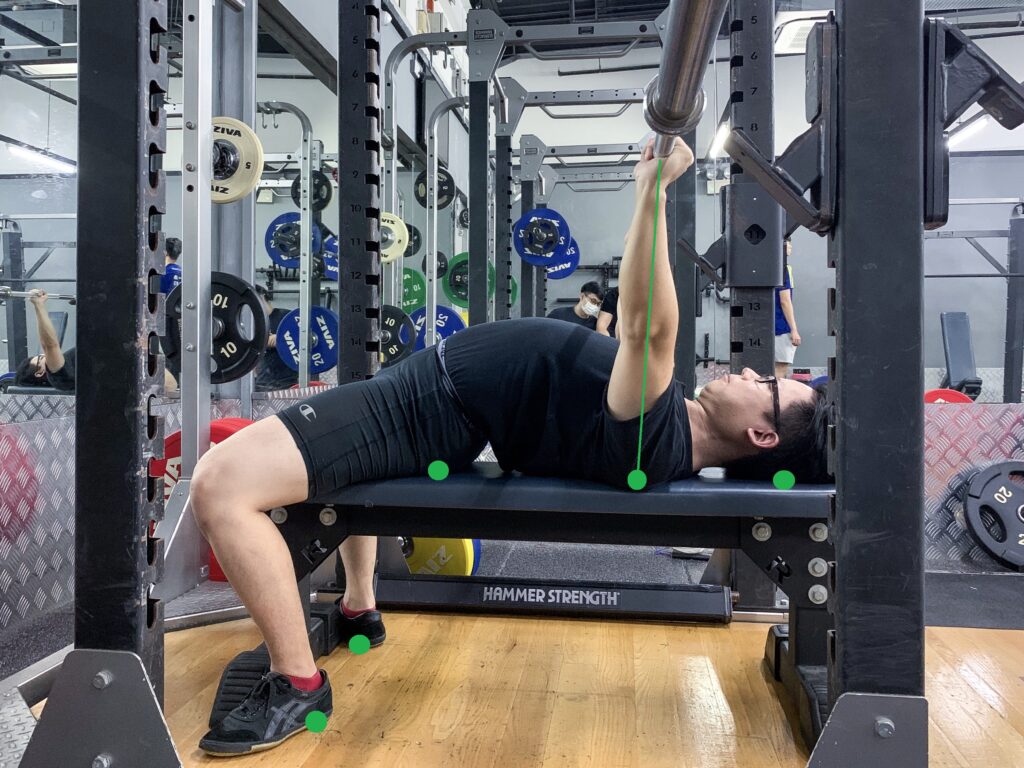
Each point of contact is essential in order to create a stable platform for you to press the barbell off from. You want the barbell to be directly over your shoulders, with your wrists and elbows stacked in between the barbell and your shoulders. Since the barbell is held above your shoulders, most of your weight and balance should be on your upper back region. On top of that, your legs should be firmly planted on the ground, actively driving towards your traps to help keep most of the stability on your upper back region.
Let’s talk more about what creates that stability in your upper back. As you have observed in the picture, a proper bench set-up has an arched back, amongst other things. This bench arch is the by-product of the shoulder retraction and depression. Why should you stabilise your upper back? That’s because your shoulder joint is the most mobile joint in your body and thus, it is susceptible to getting hurt in exercises such as the bench press when executed poorly. By retracting and depressing your shoulder blades, you extend your upper back and create an arch that puts your shoulders and rotator cuffs in a much safer position to execute the movement. This way, your body will also be in a more advantageous position to use your chest muscles to press the barbell.
the set-up
Now that we have a rough idea of what makes a good starting position, it’s time to go through the steps to get there – the set-up. Just like in the squat, you want a set-up that is repeatable, efficient, and executed with intent. Each step of your set-up should be purposeful and should help you bring the lift into focus. That much doesn’t change. So let’s walk through the check-points of a good set-up in the bench press.
First things first, you want to lie down and establish a firm, symmetrical grip with all of your fingers in contact with the bar. You want to set the bar nicely on the meaty part of your palm such that it sits directly on top of your wrist and forearms.
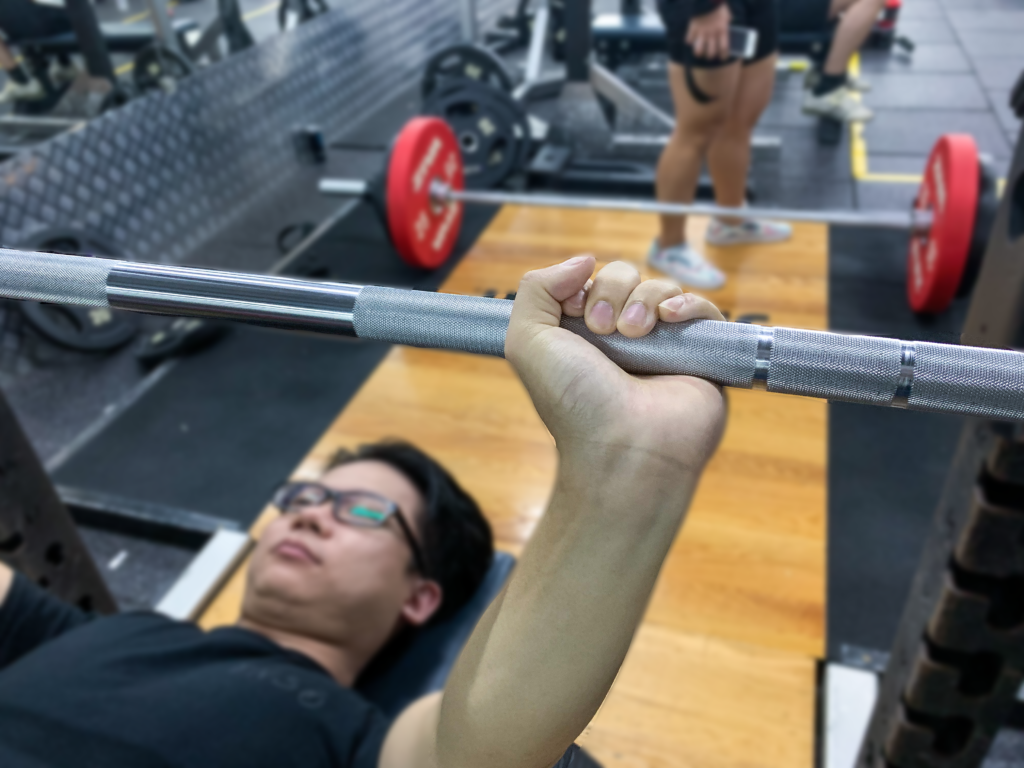
Barbell is not stacked on top of the wrist and forearms.

Barbell is stacked on top of the wrist and forearms.
Grip width will differ from person to person and establishing one that allows you to lift the most amount of weight will take some time and experimentation. Taking a grip width where your forearms are perpendicular to the barbell when it is on your chest is generally a good starting point to adjust from.
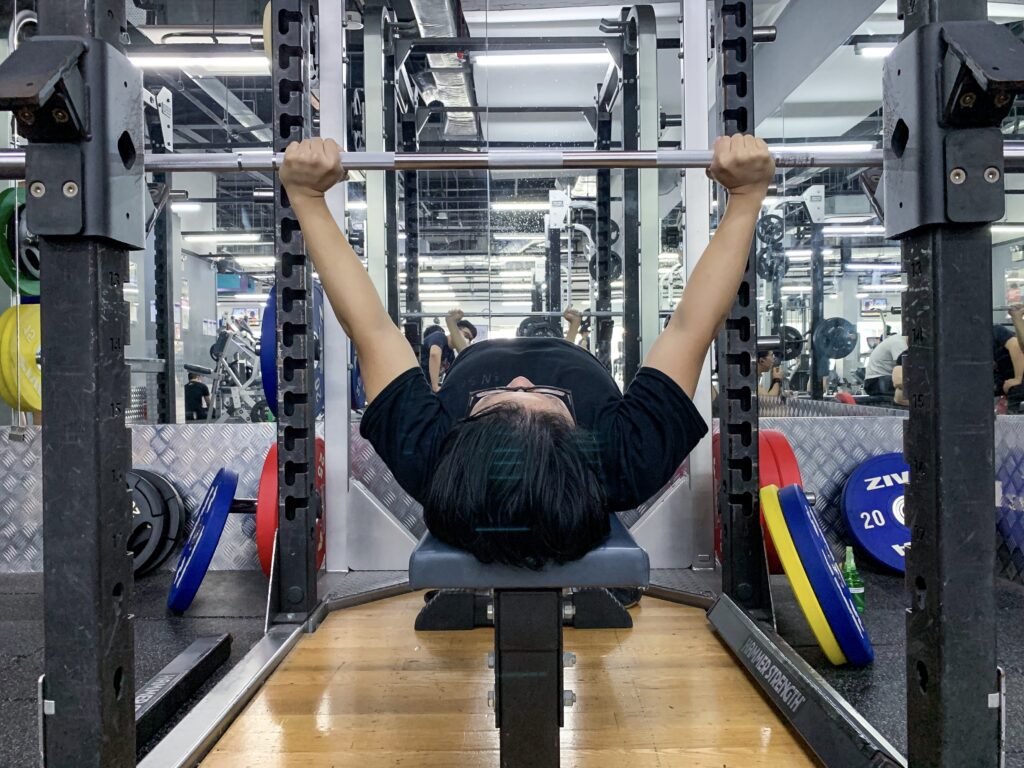
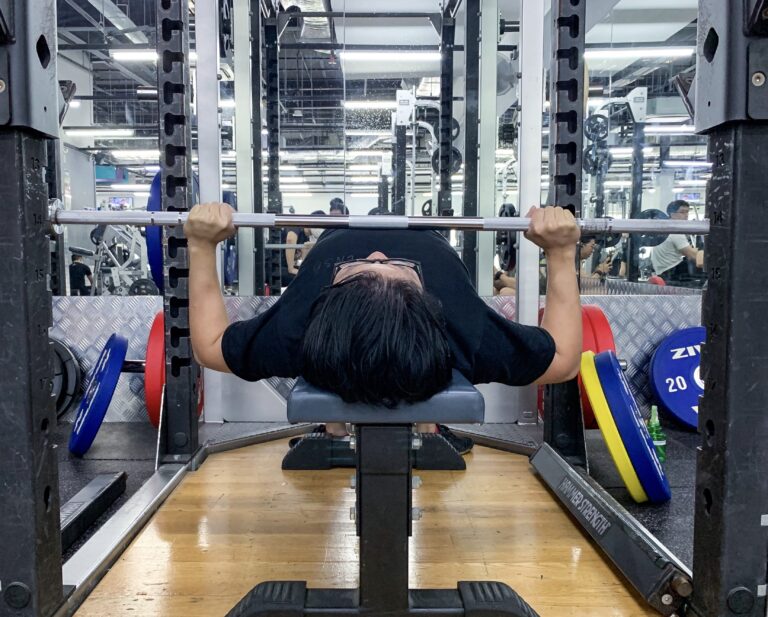
Symmetrical grip width, with perpendicular forearms when the barbell is on the chest.
However, as per the rules of Powerlifting, the maximum width that you can take in the bench press can only be as wide as 81cm (the distance between the 2 rings on the barbell). This means that the rings have to be covered and no wider than that.
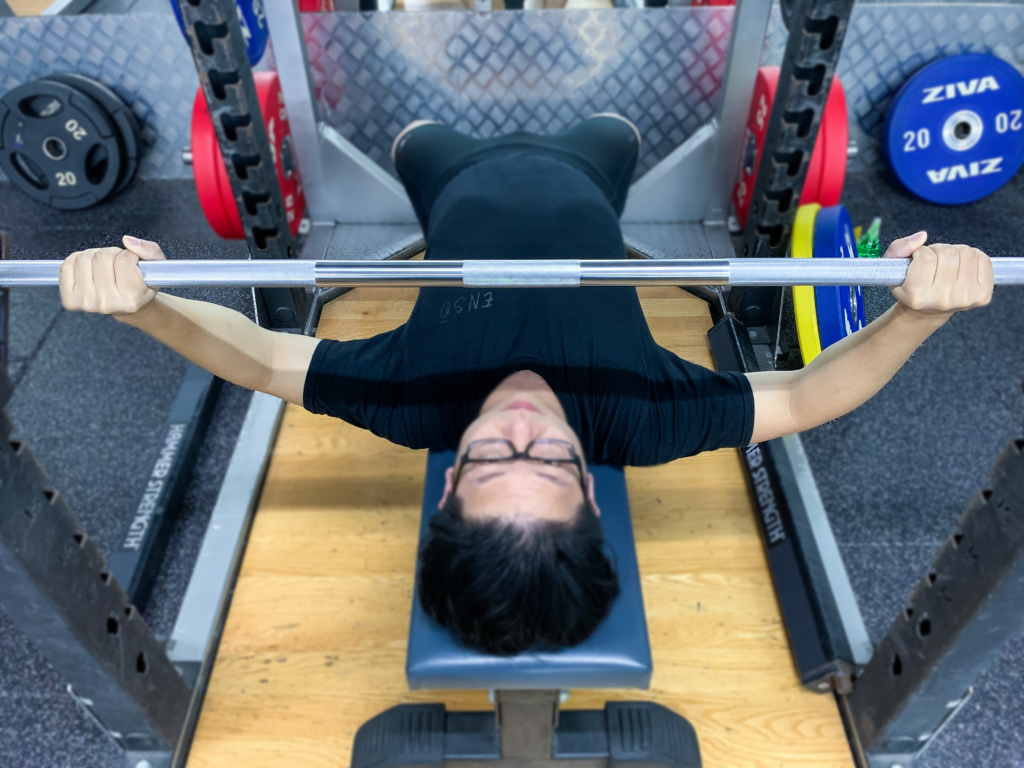
Maximum legal grip width on the bench press, with the rings covered by the index fingers.
Just a note, some commercial gym barbells have 2 rings. The inner ring is the ring that is present on a powerlifting bar. The outer ring will not be present in a power bar. For your reference, you should always follow the inner ring.

Displaying the inner ring covered with index finger on the maximum grip width.
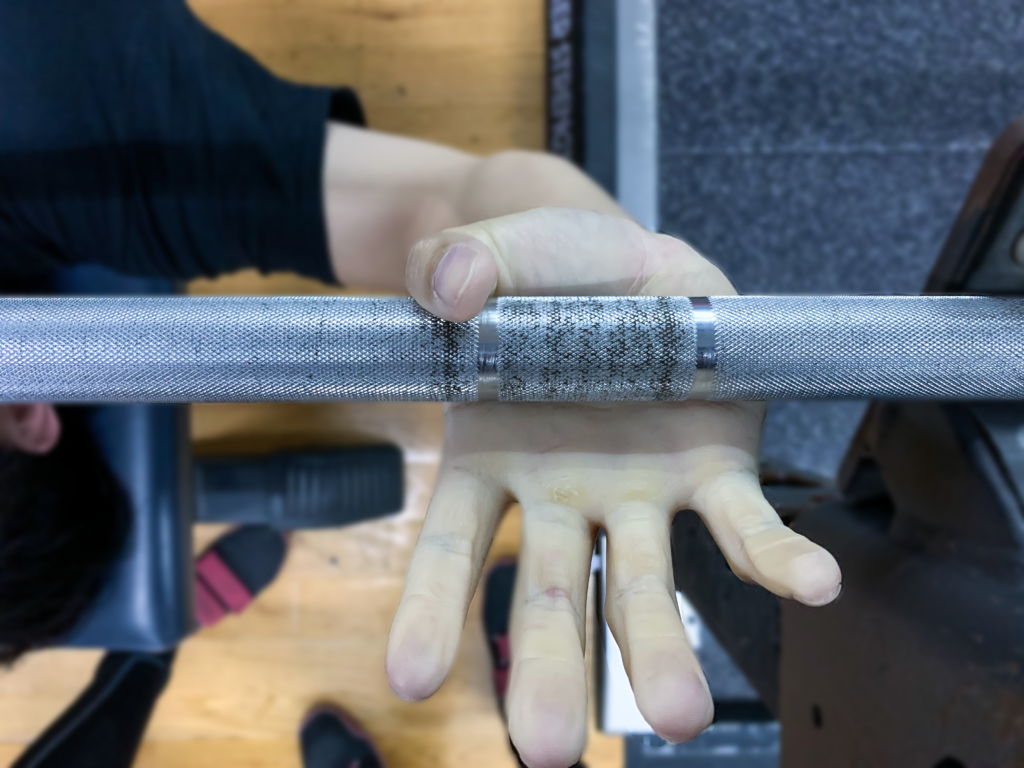
Showing both the inner and outer rings on the barbell.
Once you have established your grip, centre yourself accordingly with the bench and barbell, with the barbell along your eye level. You can make use of the centre knurling on the bar as your point of reference. Retract your shoulder blades together as if trying to grab a pencil between them.
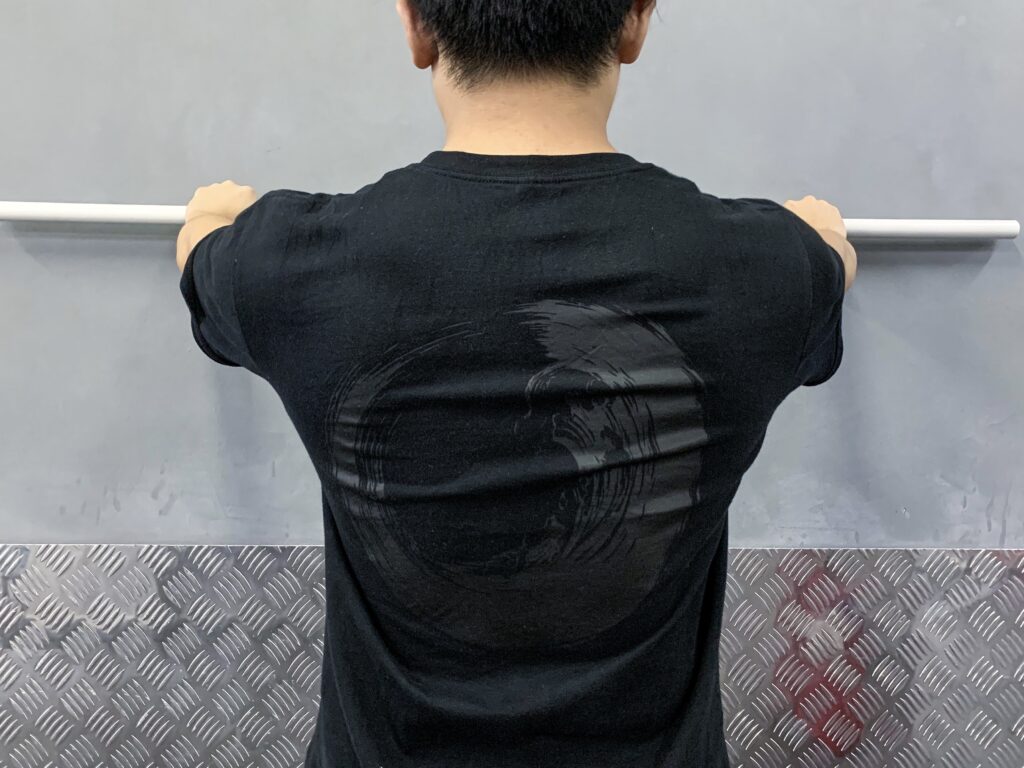
Shoulder blades are not retracted.
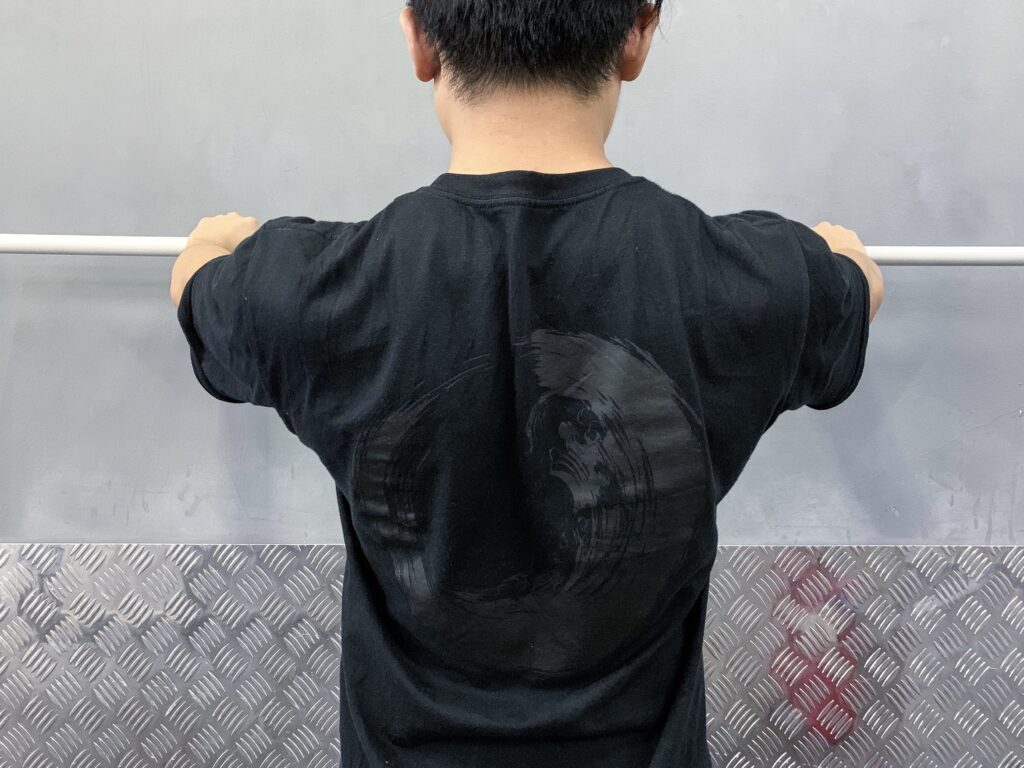
Shoulder blades are retracted.
Using your legs to push on the bench, slide yourself further up the bench to depress your shoulder blades and slide them into their ‘back pockets’. Get your chest high towards the barbell, and flatten your neck against the bench by tucking in your chin. Stop when the barbell is approximately above your mouth/chin. It will help shorten the distance that the barbell has to travel out when you unrack, which will give you a much easier time to preserve your shoulder retraction and depression that you created in your set-up during the unrack

Slide yourself further up the bench to depress the shoulder blades, get your chest high towards the barbell and flatten the neck against the bench.
Gently put your legs down onto the ground to maintain your leg drive as much as you can and set your desired feet position symmetrically. Your feet position here will differ from person to person. Generally, you want a feet position where your knees ideally end up below your hips once you have unracked the bar and set your butt down onto the bench. To start with, set your feet just outside the bench and slightly behind your knees. Adjust slowly to a feet position where you feel the most stable and are able to leg drive without your butt leaving the bench during the movement.
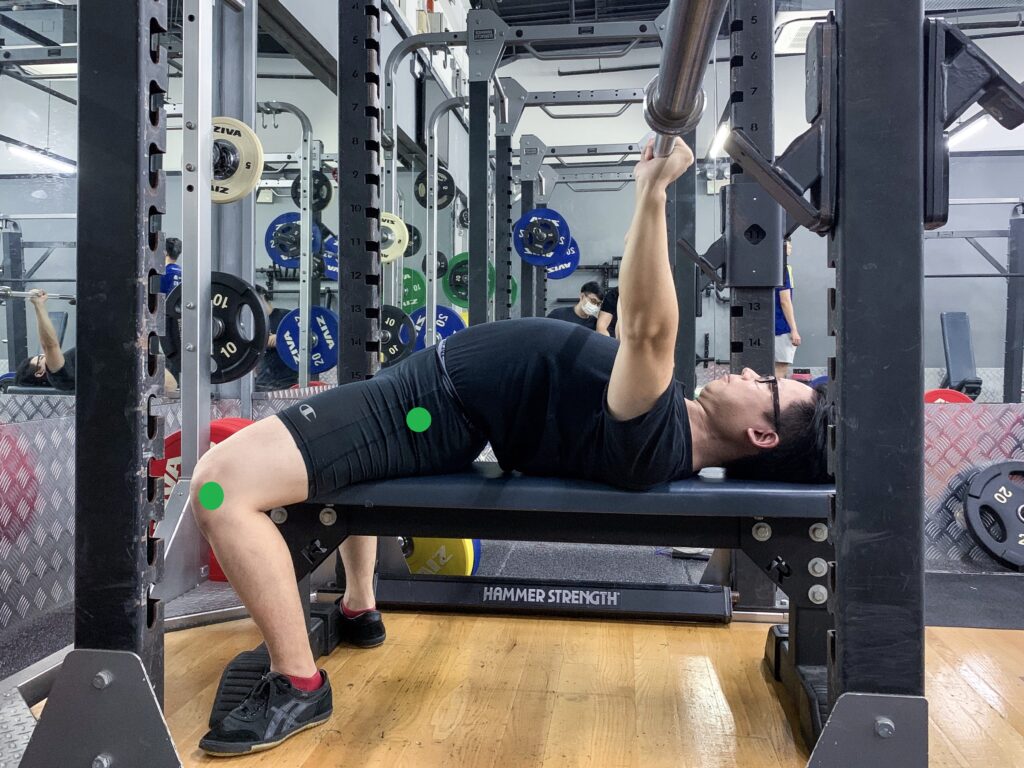
After unracking the barbell and putting the butt down, the knees are below the hips, with the feet slightly outside the bench and behind the knees.
Once you have set your feet firmly onto the ground, unrack the barbell by locking your elbows and performing a straight-arm pulldown while keeping your neck flat against the bench and maintaining your shoulder position. Gently put your butt down onto the bench. We generally recommend that you put your butt down after the unrack as this preserves the arch and leg drive better.
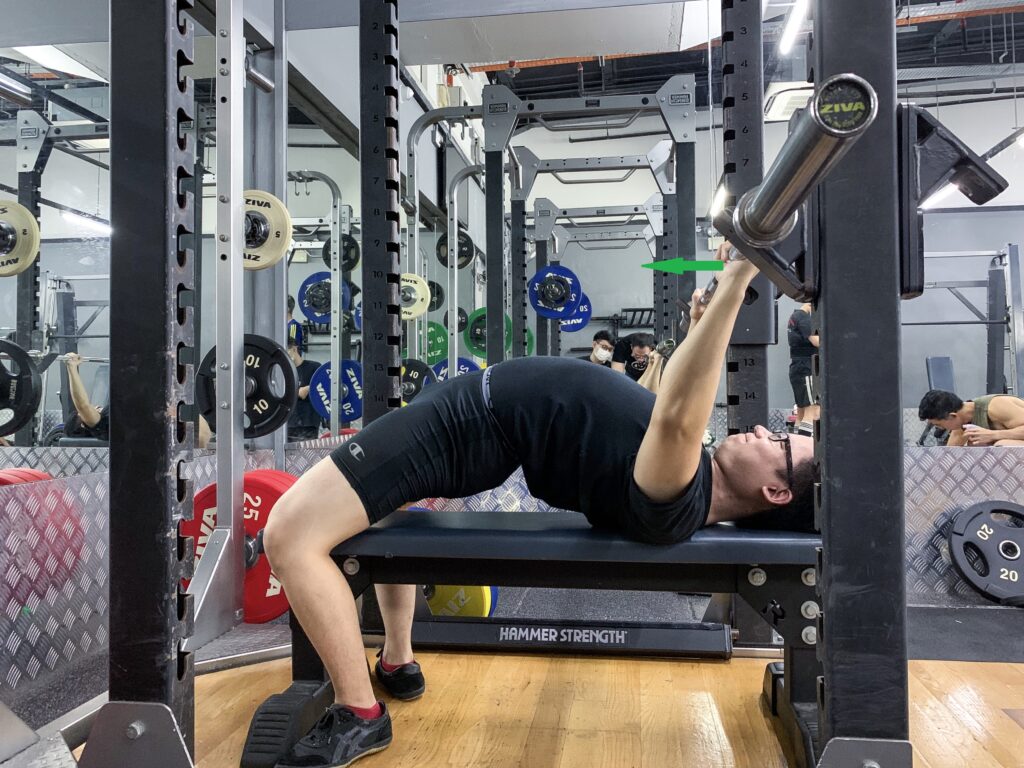
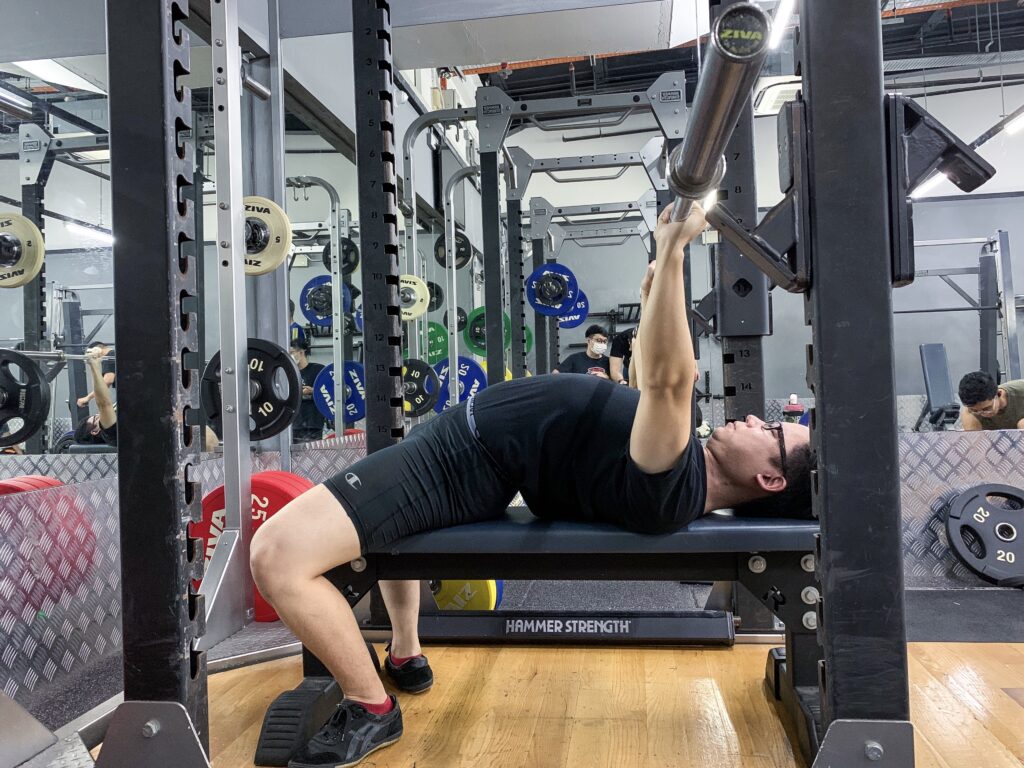
Demonstrating the unrack.
The execution
After completing your 59 seconds of exorcism, you have 1 second left to execute the bench press. Breathe and brace, and initiate the bench press by breaking at your elbows. Guide the barbell diagonally down to your sternum, keeping your forearms stacked under the barbell. At the same time, think about approaching the barbell with your chest.
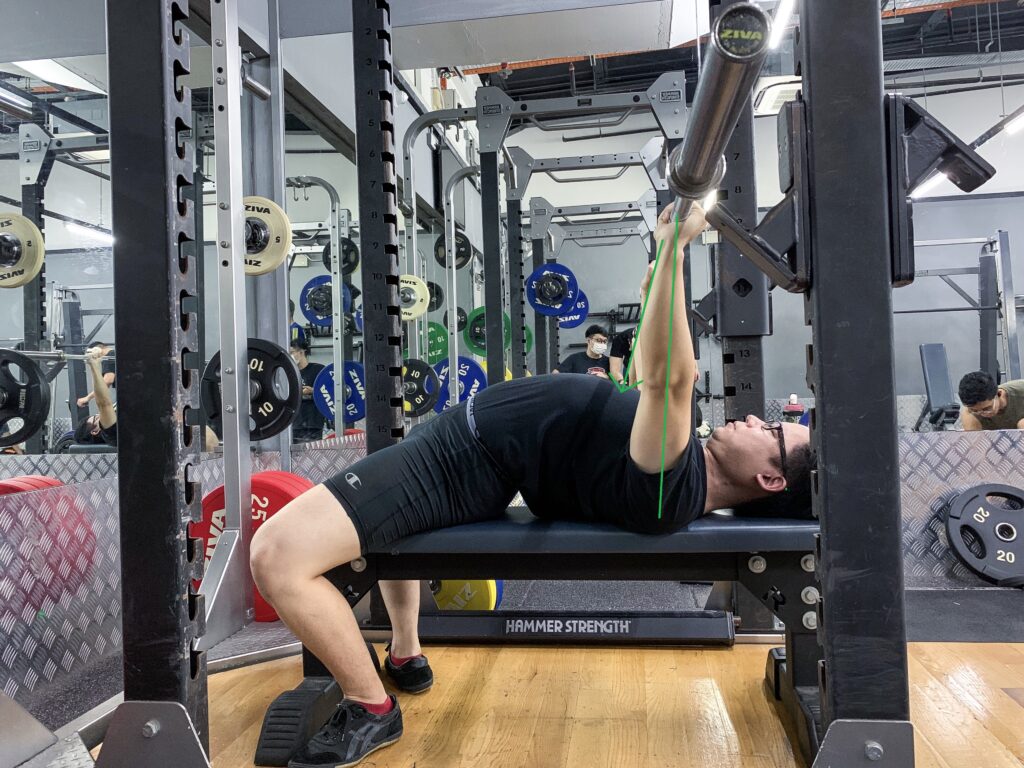
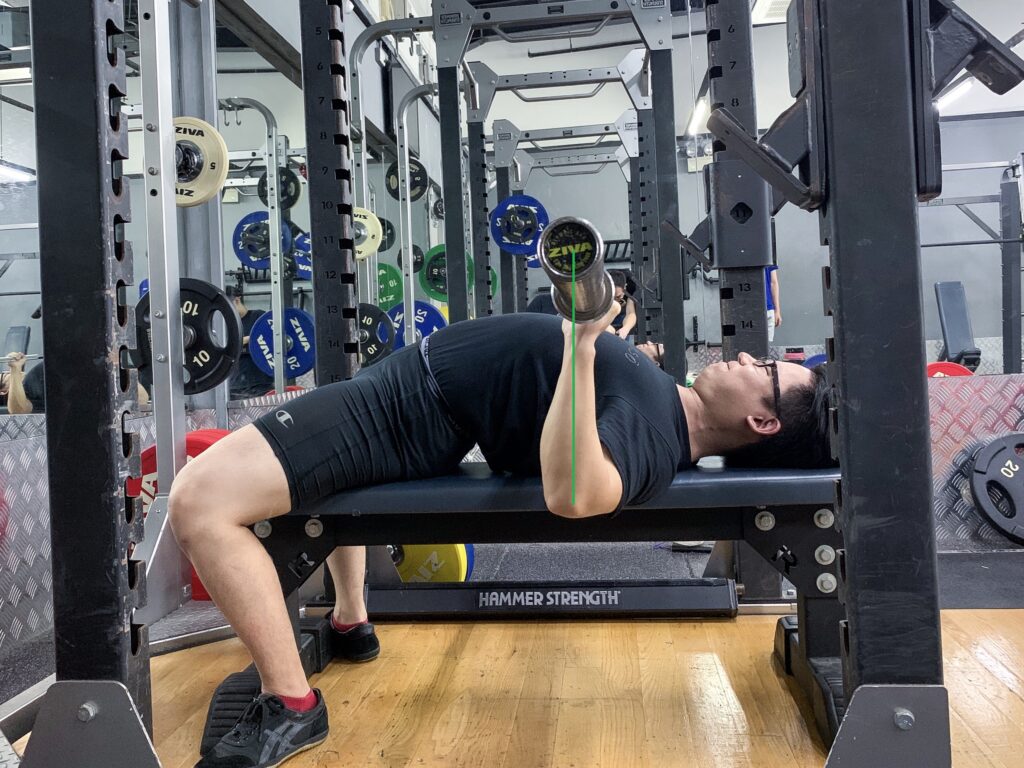
A non-linear bar path in the bench press, while keeping the forearms stacked under the barbell.
Once you have achieved a strong, solid pause with the barbell stationary on your chest, press the barbell back (towards your face) over your shoulders by punching the ceiling and driving your back against the bench. Lockout your elbows, and you are ready to perform another repetition.
And that’s all she wrote folks. Hope that was simple enough to digest and execute. As with all movements, be it squat, bench press or deadlift, there will be some individual differences. It takes time and experimentation to figure out what works best for you. However, going into every session with a purpose and lifting with intent doesn’t change. Keep practicing to achieve consistency in your set-up and execution, and be patient with your progress.
Further questions? Feel free to contact us at enso.powerlifting@gmail.com.

